Description of species and varieties of garden daisies, planting, growing and care
Perennial garden daisies are used for decorative purposes to decorate the garden and personal plots, since they are considered the most beautiful and romantic flowers. The plant is unpretentious, but with irregular care it can die. In order for the plant to please with its attractive appearance for many years, it is necessary to follow all the requirements for planting and caring for the crop.
Botanical description
Garden chamomile is a perennial herb belonging to the Astrov family. The stem, on which alternately bifiform leaves are located, can reach a maximum height of 60 cm. The top of the plant is decorated with a large inflorescence, collected from many reed and without reed flowers, white and yellow. The plant is characterized by vigorous growth and early flowering.
Difference from real
Chamomile is considered a Russian folk flower, but this species can be found on many continents in a cultivated form. In the wild, in meadows and fields, chamomile grows, which is actively used for medicinal and cosmetic purposes.
According to biologists, garden chamomile has nothing to do with a wild plant. Since this is a daisy, which differs from it in that it has less pronounced white petals, a thinner, dissected leaf plate and a rich aroma.
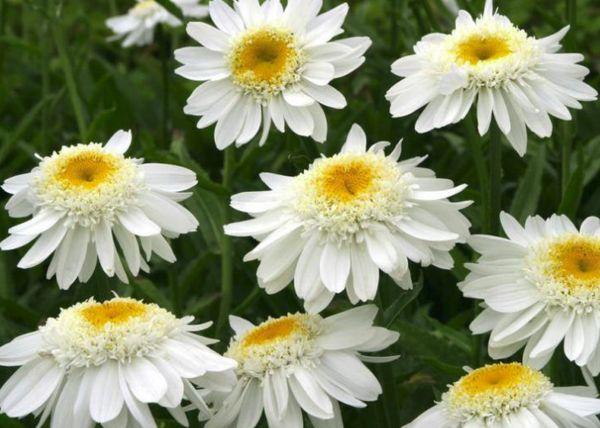
Features:
Garden chamomile has a strong and resilient stem and a dense, bright bud with snow-white petals and a yellow center. The plant can bloom for a long time, and sometimes throughout the summer. It looks great when cut and is able to maintain its original appearance for a long time.
Varieties
The most popular types of garden chamomile, preferred by most gardeners.
Lugovaya
The plant forms a bush endowed with numerous straight stems, reaching 90 cm in height. Each branch has a bud, which is a yellow basket with white reed flowers.
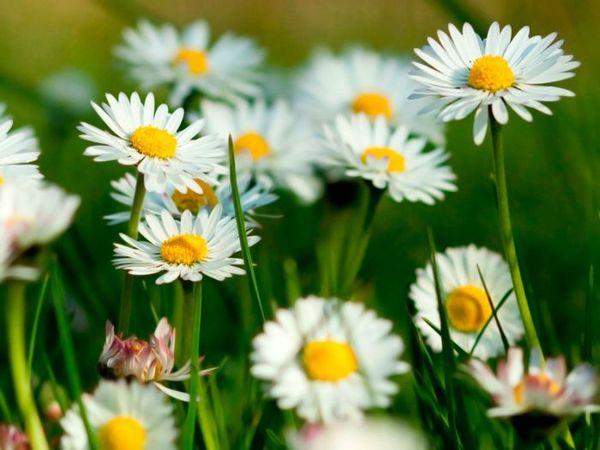
Kuril
Refers to late-flowering garden daisies, which grow no more than 20 cm. The root system is compacted and strong.The maximum diameter of the inflorescence is 8 cm.
Swamp
A rather low species, reaching a height of 25 cm. It is able to form a lush bush. The leaves are bright green, and the lateral flowers in the inflorescence are snow-white. The flower is characterized by an interesting shape, due to which the plant is often called chrysanthemum.
The greatest
The plant reaches 1 m in height. The rhizome is localized on the surface. A large bud up to 10 cm in diameter has white petals arranged in several rows and a yellow center.

Large
Bush garden chamomile is large and is considered one of the largest species. In height, the stem grows to 90 cm, the bud itself is more than 15 cm in diameter.
Terry
The decorative perennial has white flowers of impressive size, the stem, the length of which varies from 50 to 100 cm. The inflorescence has a diameter of 10 to 12 cm. It begins to bloom from the beginning of June to the end of August.
Popular varieties
The culture boasts such varieties.
Large-flowered alaska
The inflorescence has snow-white petals and a dark yellow core. The bud in diameter can reach 10 cm, and the bush itself is 80 cm in height.
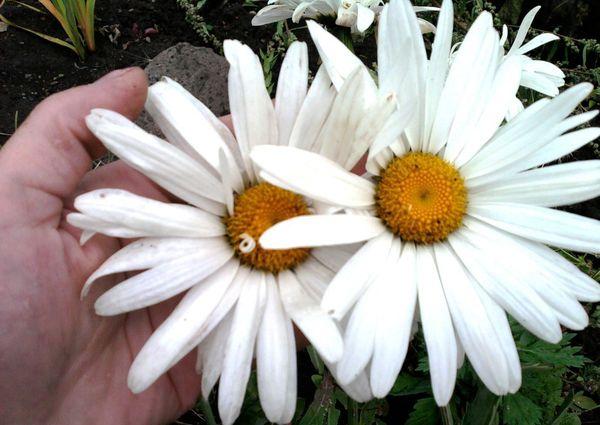
Crazy Daisy
The herbaceous plant has a straight stem up to 1 m high, on which are located oblong pinnately dissected leaves with a jagged edge. The buds reach 12 cm in diameter, can be simple and double.
May queen
A bush up to 90 cm high is distinguished by double or semi-double inflorescences. Has a white tint of reed flowers at the edges. Pleases with long flowering.
A princess
A small plant that grows no more than 30 cm in height. The diameter of the inflorescence is 8 cm. The plant blooms for no more than a month, but if you cut off the old bud, then there is a possibility of extending the growing season.
North Star
It differs from other varieties in the presence of thin pointed petals collected in baskets. The bud is 16 cm wide. The branched stem can grow up to 45 cm in length.
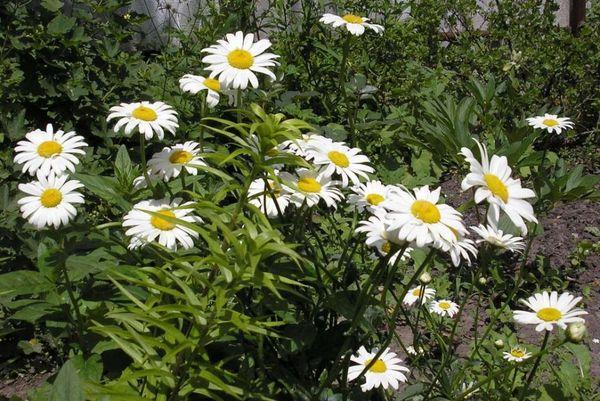
Garden princess
A branchy compact plant no more than 35 cm in height, has a large number of inflorescences over 10 cm in diameter. The stems are dense and firm.
Silver Princess
A small plant up to 30 cm in length, which forms new stems during the growth period, due to which it blooms throughout the growing season. It has large inflorescences with long white petal flowers.
Winner
The variety is capable of reaching over 90 cm in height. It became popular due to the large number of impressive buds with snow-white petals. Blooms from June to August for several years without transplanting.
Landing
You can plant garden chamomile in several ways, namely by the seedling method, by sowing in open ground. Each method has its own advantages and disadvantages.
Using seeds
Seeds can be sown directly into the ground. This method is fast and does not require significant investment of time and energy.
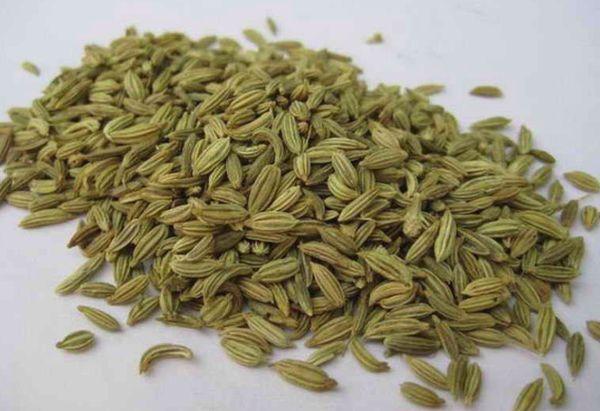
Timing
Chamomile seeds are highly resistant to frost, so they are sown both in spring and autumn. Sowing before winter will not only be able to provide guaranteed germination of strong plants, but will also significantly save time in spring. When planting in the spring, make sure that the air temperature is 16 degrees.
Landing scheme
When planting garden chamomile seeds in open ground, carefully study the planting algorithm:
- Thoroughly fluff the soil saturated with mineral fertilizers.
- Sprinkle seeds on it.
- Sprinkle a little earth over the seeds.
The plant does not react well to wetlands, therefore, you should take care of the availability of a neutral territory for planting in advance.
Agrofiber
For quick and guaranteed seed germination, it is recommended to use a covering material. It is best to sow garden chamomile seeds under agrofibre.
Thinning
After the germinated plants have 3 pairs of true leaves, it is recommended to pinch off the extra stems in order to accelerate the growth of the main branches and improve their quality. The plant categorically does not tolerate thickening, therefore, it needs timely thinning.
Watering
Watered with extreme caution, since not yet matured plants can suffer under the influence of sharp streams of water.
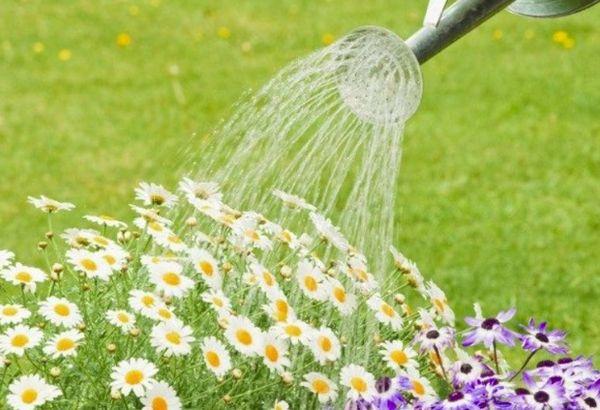
Features of the seedling method
The method is considered the most successful. Seeds are selected in advance in a flower garden or purchased in March. They can be planted within a month after the first shoots, depending on the temperature and weather conditions.
Disembarkation
No more than three seeds should be planted in a tray with cells, and then covered with soil from peat and sand. Tighten the top with a special film and leave it near the window so that a minimum of sun rays fall on it. Watering is carried out using a spray bottle so as not to harm the root system.
Thinning
The sprouts will begin to thin out within 2 weeks after planting. Then you can get rid of the film and place the trays on the windowsill closer to the sunlight. Also, an open window can negatively affect the development of seedlings, so drafts should be avoided.
Topping
After the seedlings reach 5 cm, it is necessary to carefully pinch off the weakest specimens, leaving one bore in the cell. Do not pull them out, as there is a possibility of harm to more developed sprouts.
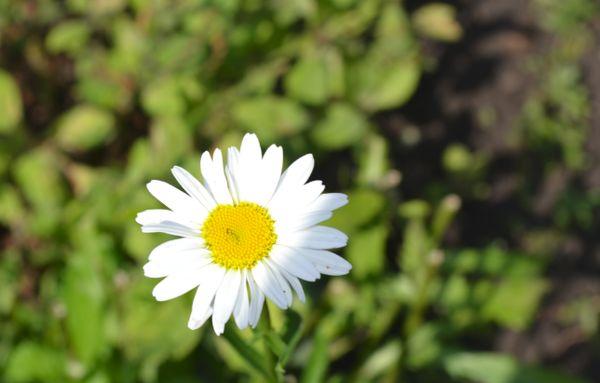
How to plant in open ground
When the sprout is fully formed and ready for transplanting, it must be moved to open ground. This is a rather painstaking process, which has its own nuances, which should be carefully read.
Timing
To start planting seedlings exactly at the time when the threat of frost passes. The most optimal time for this is the end of May, when the nights will be warmer.
Seat selection
Chamomile takes root well on neutral soils; increased or decreased acidity can negatively affect the growth and development of the plant. Wetlands are the main enemy of chamomile.
Soil preparation
For the full development of garden chamomile, before planting, enrich the soil by applying mineral fertilizers.
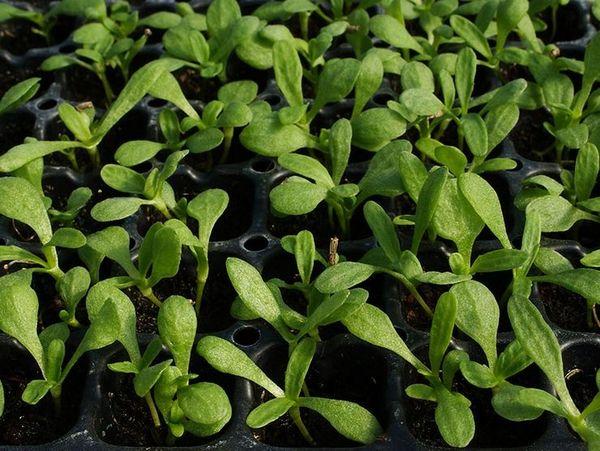
Landing scheme
Planting seedlings in open ground has its own characteristics, on which the resistance of the plant as a whole depends, as well as the quantity and quality of buds in the future:
- Loosen the soil a little.
- Prepare small holes, calculating the size for the root system of the seedlings, at a distance of 35 cm.
- Place 2-3 bushes in each hole.
- Cover the root system with soil substrate, strengthen it in the soil.
When transplanting, it is worth paying special attention to the root system, since it is thin, delicate at this moment and can easily be damaged.
Watering and loosening
Water and loosen immediately after planting and repeat the procedure as needed during the growth and development of chamomile.
Care
In order for the plant to grow normally and attract attention with its bright and healthy appearance, you need to perform a number of care measures.
Weeding
Abundant weeds can negatively affect the growth and development of garden chamomile, so weed and loosened regularly. The root system needs not only fertile soil, but also the root system getting enough air.
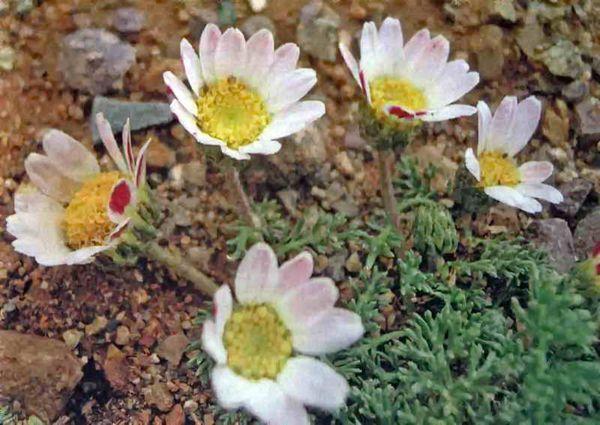
Watering
It is important for a crop to get the required amount of water every day, so check the soil regularly for moisture. Water in a timely manner using a large amount of water.
Loosening
Immediately after each watering, the soil should be loosened so that the water does not stagnate on the surface, but penetrates deeply and is absorbed by the lower tier of the root system.This process will help not only speed up the growth of garden chamomile, but also help it avoid a number of diseases associated with excess moisture.
Top dressing
Mature plants need fertile soil no less than growing ones. For top dressing, use urea in a proportion of 20 g of substance per 1 square meter. Water abundantly after fertilizing. If the leaf plate begins to fade and dry out, it is worth additional feeding.
Alternate minerals with droppings to eliminate the likelihood of soil acidification, which negatively affects the development of the plant.
After flowering
As the chamomile fades, fertilize the exhausted soil with the help of mineral complexes, organic matter and begin to prepare the bushes for winter.
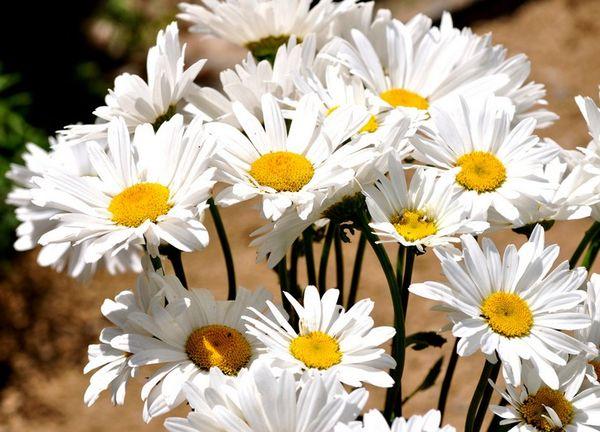
Preparing for winter
Garden chamomile does not tolerate low temperatures, so it should be carefully prepared for cold weather. To do this, cut off all ground stems and cover the plant. Use sawdust, dry foliage or non-woven material as a covering.
Reproduction
The plant propagates by dividing the bush or collecting seeds.
Collection and storage of seeds
When the flower on the stem dries up, seeds form in the core. They fall out when pressed and have a brown tint. They must be removed from those inflorescences that seemed stronger and healthier compared to the rest. Then spread out on a napkin and let dry a little. Then place them in a bag and store them in a place where it is dark and dry.
It is important to collect and properly dry the seeds on time in order to achieve high germination.
Dividing the bush
Garden chamomile also reproduces by dividing the bush. 2-3 years after planting, the bush grows, and a void forms in the middle, since the central trunk dies off. In the spring, dig up such a bush and divide it into several parts.

Next, make small holes 20 cm deep, keeping a distance of 40 cm from one another. Place part of the bush in the hole, cover the root system with earth and water thoroughly.
Diseases and pests
Like all ornamental plants, garden chamomile shows a weakness for certain diseases and pests. When cultivating it, you can meet with some of them, so it is worthwhile to arm yourself in advance with information about common diseases and promptly take the necessary measures.
Powdery mildew
A plaque similar to a white powder forms on the leaves.
Gray rot
Symptoms of the disease are brown spots on shoots, leaves, which quickly increase in size and are covered with gray fluffy mycelium.
Rust
Forms irregular reddish spots on the leaves and stem.

Fusarium
Drying of the plant, acquiring a brown color.
The fight against diseases and pests involves not only the implementation of chemical and biological measures, but also properly organized care.
How to transplant to a new location
For a high-quality transplant, dig a bush with a clod of earth so as not to damage the root system, move it to a well prepared in advance, water and mulch.
Combination with other plants
Garden chamomile forms wonderful compositions in combination of such plants as calendula, cornflower, pyrethrum, poppy. Low-growing varieties will look spectacular along the edge of lawns and paths.
Answers on questions
How often should you replant the plant?
It is recommended to transplant bushes to a new place 1 time in 3-4 years. The procedure is carried out in the spring.
How to prune a bush?
After the plant has bloomed, cut off all the stems at the root to 10-15 cm from the ground. This will strengthen the rhizome and provoke the formation of new shoots. Garden chamomile will decorate any adjoining territory, garden, flower bed with delicate flowers. And cut flowers will stand in a bouquet for a long time, without losing their freshness and retaining their attractiveness.
Reviews
Marina: “From childhood I watched my mother plant daisies. Now I sit with my daughter. "
Katerina: “For a long time I have been growing garden daisies in my garden. They are pleasing to the eyes of passers-by, neighbors often compliment my exquisite flowers. "




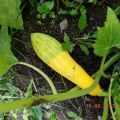

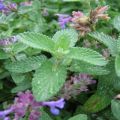


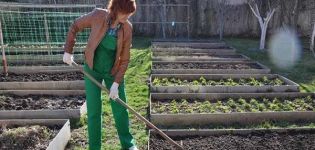
I really like the May Queen daisies. Flowers grow quite large and bloom is long. Most importantly, they do not require special care, for giving what you need.